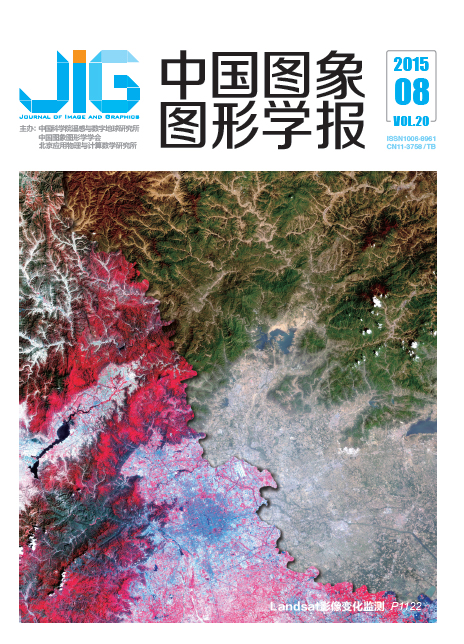
基于Radon-经验模式分析的纹理分类
摘 要
目的 纹理分类是机器视觉和设备状态检测研究的核心技术,在工业生产领域起着重要的作用。高效的纹理分类方法不仅可以提高生产效率,还可以大幅提高产品的质量和可靠性。针对工业生产中图像纹理提取计算方法复杂等缺陷,提出一种1维化图像的纹理分类方法。方法 在图像1维化基础上,将其视为一类特殊的时域信号,引入EMD(empirical mode decomposition)特征计算方法。具体包括,通过Radon变换将2维信号1维化,评价投影信号以选取有利于分类的投影方向;对投影信号进行端点效应抑制和经验模式分解,并根据各个IMF(instrinsic mode functions)分量与原始信号构建纹理特征集;对特征集进行主成分分析,简化压缩特征集以降低特征集维数;结合支持向量机对特征集进行分类有效性评估,建立最优分类决策体系。结果 在Brodatz和KTHTIPS数据集上展开了多尺度、多方向等纹理分类实验,取得了满意的纹理分类结果。建立了基于网点纹理识别的印刷机状态检测系统,实现了工业生产应用。通过分析多幅Brodatz图像进行了特征提取速度对比,本文方法耗时5 s左右,而GLCM、Gabor滤波分别为9.5 s和24 s左右。结论 1维投影信号的IMF特征对于纹理特征有着很好的识别效果;由于进行了旋转投影选择并计算了统计特征,使得该方法对于多方向和多尺度纹理同样有效;所提出方法有着较高的计算效率。
关键词
Texture classification based on Radon-empirical mode decomposition analysis
Xu Zhuofei1, Zhang Haiyan2, Liu Kai1, Hou Heping2, Xu Qianqian1, Li Lifeng2(1.School of Mechanical and Precision Instrument Engineering, Xi'an University of Technology, Xi'an 710048, China;2.School of Printing Packaging and Digital Media, Xi'an University of Technology, Xi'an 710048, China) Abstract
Objective Texture classification,which is the key technology for computer vision and equipment monitoring, plays an important role in industrial production.Texture classification improves not only the efficiency of production but also product quality and reliability. For signal processing technology, a new method with a higher efficiency is provided for image texture classification. Method The projection of texture as a time domain signal is analyzed using empirical mode decomposition. The main projection direction is selected, and then two-dimensional signals are converted into one-dimensional signals by Radon transform. The end effects of the projection signal are restrained and divided into intrinsic mode functions (IMFs). After the statistical characteristics of the IMFs are calculated, they are compressed and simplified using principal component analysis to reduce their dimension. Once the effect of the principal characteristics is accessed with a support vector machine,classification is realized. Result Texture classification experiments are conducted in multiple directions and at multiple scales using Brodatz and KTH-TIPS datasets. A statemonitoring system for printing machines based on texture has been established. The calculation velocities of the proposed Radon-EMD, GLCM, and Gabor were compared using several Brodatz images, and the average times of the three texture analysis methods are approximately 5 s, 9.5 s, and 24 s, respectively. Conclusion The study proved that IMFs of projection are good at texture classification and have the significant advantage of computational simplicity. This method obtains a good classification result in multiple directions and at multiple scales. Thus, the method has good computational efficiency.
Keywords
empirical mode decomposition gray projection texture classification image characteristics printing dots
|



 中国图象图形学报 │ 京ICP备05080539号-4 │ 本系统由
中国图象图形学报 │ 京ICP备05080539号-4 │ 本系统由